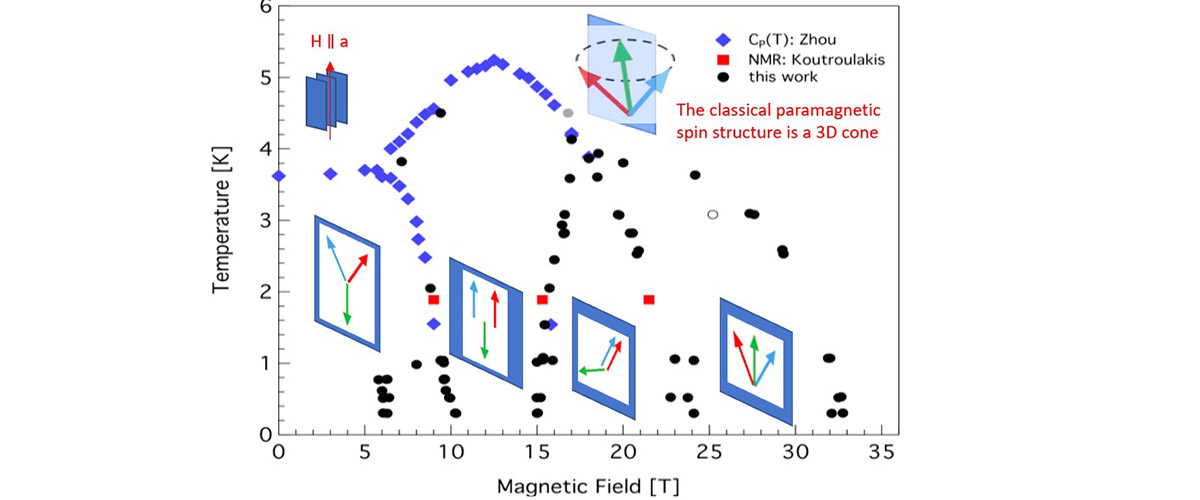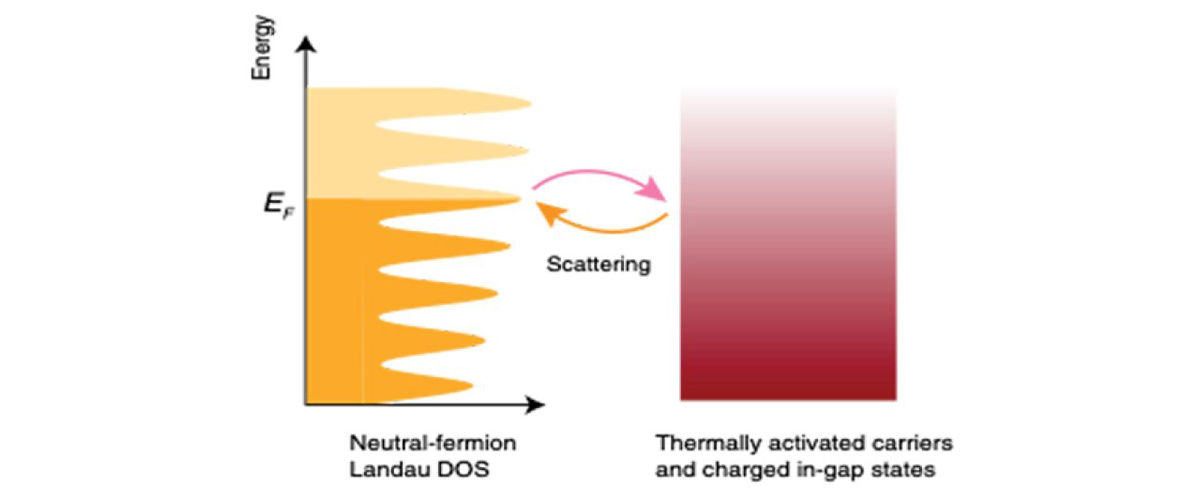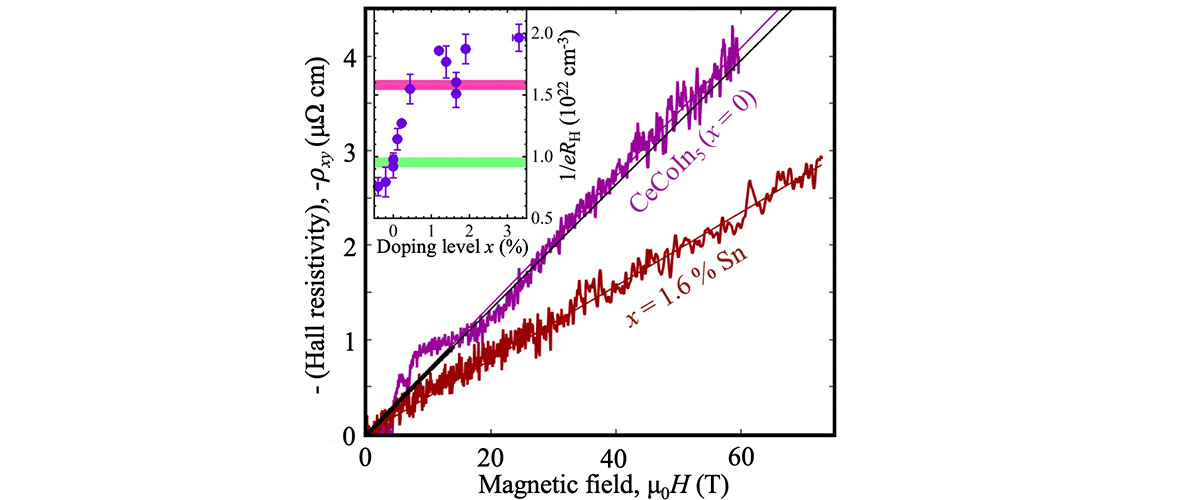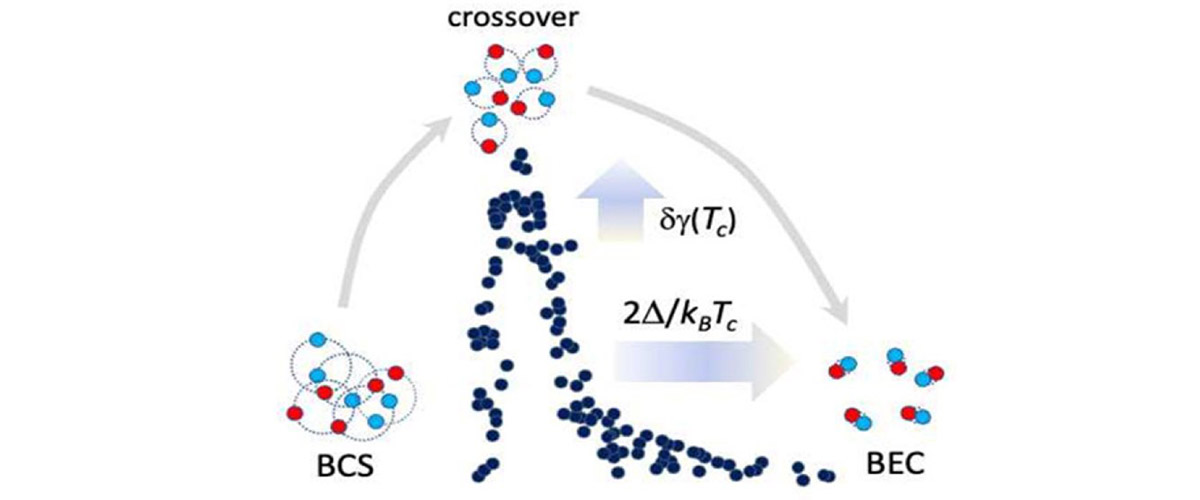What did scientists discover?
In the quantum world, individual magnetic atoms behave like compass needles and we call these atomic-scale magnets ‘spins.’ A change in orientation of one spin can cause a neighboring spin to change direction as well, and because no atom ever has zero quantum energy, the spins fluctuate in a disordered way. Surprisingly, there are conditions under which these “quantum fluctuations” can cause sets of three spins to stumble upon an ordered arrangement of their spin orientations. That is, quantum fluctuations can create magnetically-ordered materials from typically disordered fluctuations.
This user collaboration, led by a researcher from an undergraduate institution, studied Ba3CoSb2O9, in which magnetic cobalt (Co) atoms are placed in a repeating triangular pattern to form two-dimensional (2D) layers. They discovered that this provides the precise physical arrangement in which a magnetic field directed parallel to the 2D layers will enable quantum fluctuations to create an entire series of stable spin orientations. The four new spin configurations are shown in the figure, with the changes in spin orientation occurring as the magnetic field is increased.
Why is this important?
Stable magnetic spin arrangements in layered materials can be used to store and retrieve information, but researchers do not yet have good models of how having multiple layers (instead of a single isolated layer) will change what happens. These measurements have: (1) discovered new arrangements of magnetic spins in strong magnetic fields, (2) determined what kinds of arrangements are physically possible, and (3) demonstrated that even though the spins are confined to the 2D planes, the magnetic interaction between these planes changes what arrangements are possible.
Who did the research?
N.A. Fortune1, S.T. Hannahs2, E.S. Choi2, Y. Takano3, H.D Zhou4
1Smith College; 2National High Magnetic Field Laboratory ; 3University of Florida ; 4University of Tennessee
Why did they need the MagLab?
Mapping out the magnetic behavior of this material beyond the saturation field at 33T required the MagLab’s unique combination of low temperature cryostats (a dilution refrigerator with a sample rotator), high field resistive magnets, and expert scientific staff.
Details for scientists
- View or download the expert-level Science Highlight, Quantum Fluctuations Induce Stable Magnetic Arrangements in Layered Materials
- Read the full-length publication, Evolution of magnetic field induced ordering in the layered quantum Heisenberg triangular-lattice antiferromagnet, Ba3CoSb2O9Ba3CoSb2O9, in Physical Review B
Funding
This research was funded by the following grants: G.S. Boebinger (NSF DMR-1644779), Y. Takano & E.S. Choi (NHMFL UCGP)
For more information, contact Tim Murphy.






